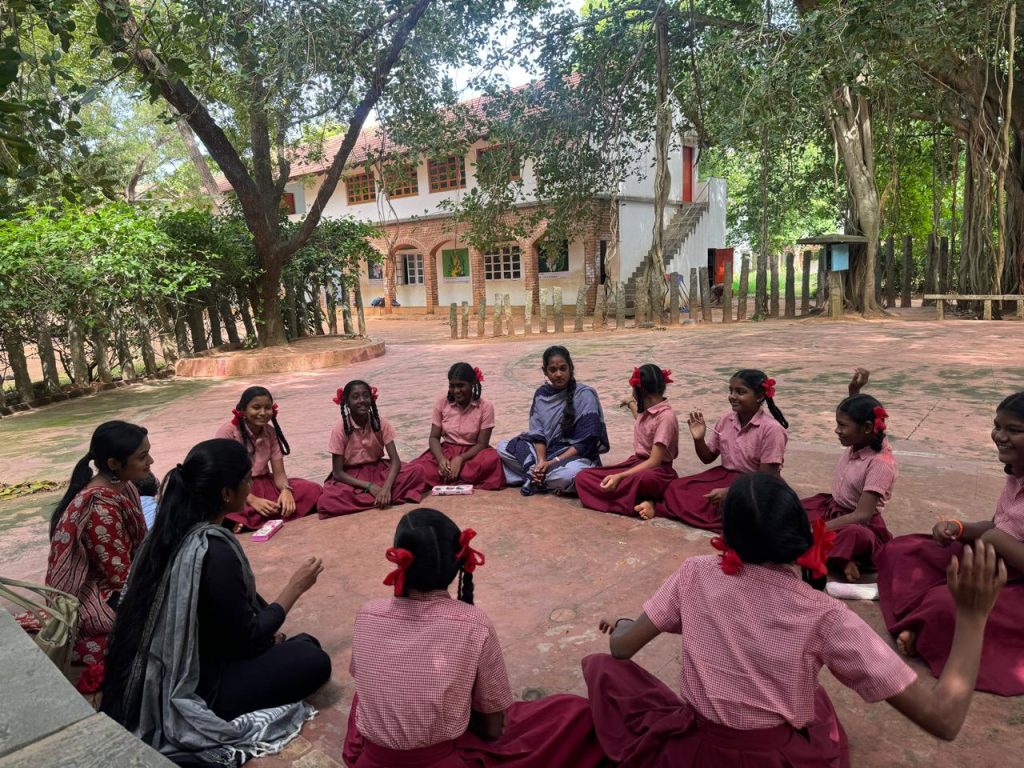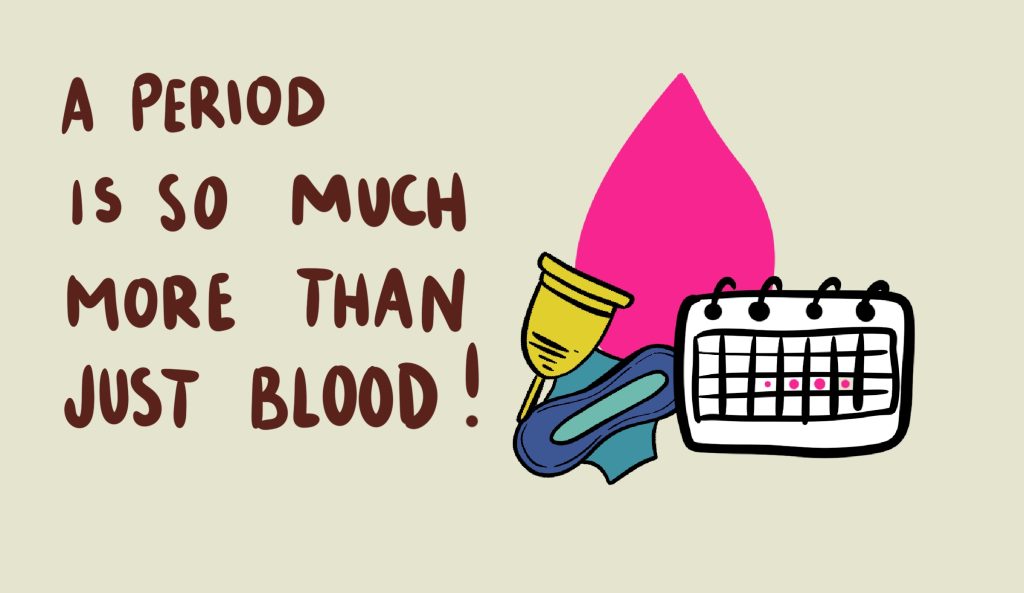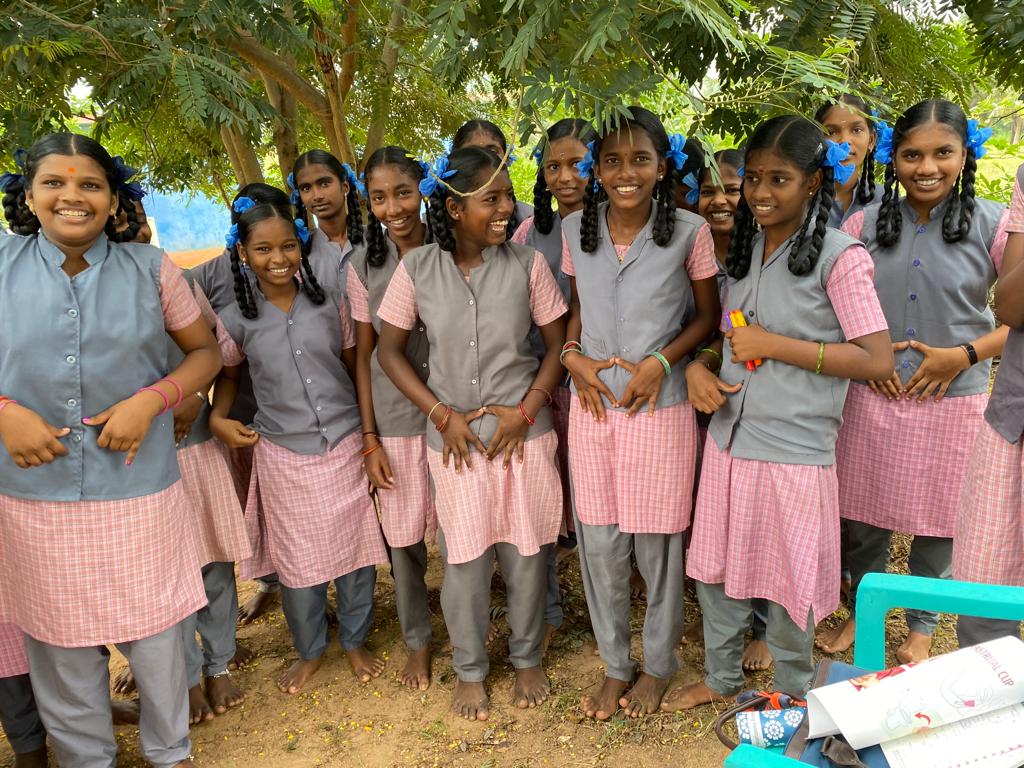“Period. End of Sentence.” A 26 minute documentary that looks at women in an Indian village who are donated a sanitary pad-making machine. More recently, the film is making waves for having won an Oscar.
Clearly, it is changing times in India when menstruation goes mainstream. And in the new space carved out for conversation, it leads us to ask…
…exactly what conversation are we having as a result of this film?
Awareness-raising about the issue of menstruation in India and how it affects women’s lives is a discussion well worth having. However, the film raises some challenging questions and these aren’t necessarily about menstruation.
Several articles have already emerged questioning the film’s:
- misrepresentation of data,
- violation of child rights and dignity,
- actual livelihood impact,
- perpetuation of a “magic solution” myth (that access to sanitary napkins resolves the issue of menstruation).
We would like to add our voice. What we hope to encourage is critical thought. Read on to hear some of the reflections that emerged from a conversation between Eco Femme’s co-founder, Kathy, and colleague Lauren. Let us know your thoughts too!
The magic solution myth
I’ve always tried to be positive about about the pad machine business model, even if I’ve had my doubts about the viability of this as a livelihood option. After seeing this documentary, I feel conflicted about the motivations and ethics of such an approach. Especially when I see misquoting of data, I wonder where individuals are really standing on this topic of menstruation in terms of offering something of meaning to the women of India. I think people are probably genuinely motivated, but somewhere, somehow this model has become corrupted. This kind of “we’ve got a solution for this problem” attitude is too reductionist.
The topic of menstruation isn’t necessarily about having access to a sanitary napkin. When it comes to solutions, we need to recognise that there is no one-size-fits-all. It has to be context specific – and we don’t have the knowledge, or right, to decide for others. And in some ways, the product you offer as a solution is symbolic too. For example, if you don’t disclose what the ingredients are then there is still limited education which inhibits dialogue, choice and cultural change.
I have to say, the way in which the film treated this topic is quite superficial and it feels as though its’ approach was not one of genuine curiosity, as much as it was to present a pre-packaged idea that there is a single solution to a “terrible” problem. All of that needs to be radically unpacked to do justice to the reality, because what ends up happening is that it portrays women in India as disempowered and unsophisticated. I think this feeds an unhelpful narrative about the hygiene “crisis” that has already got a lot of traction in the media.
Misrepresentation of data
As I mentioned, there has been tremendous media attention on the sanitary “crisis” of girls and women in rural India, and to some extent the film jumped on this bandwagon, particularly by misrepresenting data.
For example, the statement that only 10% of the Indian population use sanitary pads is inaccurate and presents an overly negative view of Indian women and society.
According to the National Family Health Survey taken in India in 2015-16, 57.6% women (15 – 24y/o) use hygienic menstrual absorbents during their period, with 45% of women and girls using commercial pads. By grossly under-representing the use of sanitary absorbent products, the film was feeding off the media’s narrative, when the reality is far more nuanced.
There is a situation, there are issues – there is no denying they are there. But is it constructive to go down this particular narrative path, and what does it do for the individuals involved in the story? We have to be careful we don’t disempower people by casting them as victims. The stories that are told about us significantly affect how we perceive ourselves – so when it’s not an open conversation based on genuine curiosity – it will not be helpful, especially when the story told about you is, perhaps ironically, pushed forward as empowering.
For this project, or any other, it is worthwhile examining the starting position. Is it genuinely trying to reflect the reality of a situation, or is it building a case for the need for an intervention, with a solution in mind? This is one of the most pressing questions in my mind, when I think of the scene of the young girl standing in awkward silence at the front of her classroom.
Dignity and respect… violated?
In one of the film’s scenes, a young girl stands in front of her peers speechless and embarrassed. The teacher has just asked her to speak about menstruation in front of a mixed class of boys and girls.
I think it was clear from the way that the footage was taken that it was largely set up to create a dramatic scene. According to the director, the film crew went in unannounced and asked a girl to stand up and start talking about menstruation. At that age, we know from experience – and this is not just restricted to India – that this is a very sensitive subject. Girls feel inherently shy and it takes time to make them comfortable to have that conversation. In many ways, as one author put it, it was a violation of child rights because it placed the girl under undue pressure and distress.
When I saw this, I really questioned whose need was being served? It felt like it was much more about the film-makers’ need to get a sensational reaction, rather than a genuine care and concern for the wellbeing of that girl – or even with a curiosity to have a dialogue with her, the teacher, or the class.
The respectful approach would have been to take the time to create a safe space and engage in a conversation with curiosity. This is what you do when you’re touching on a delicate subject. If you want to have a conversation about anything that is sensitive, you would never do it in a public place, unannounced.
This information could have been solicited in a different way. Rather than making the girl feel shame, she could have been invited to talk about her experiences around menstruation, and how shame may be a part of this, in a safe and comfortable context.
A viable livelihood?
The film suggests that these pad-making machines are a solution – both by providing a viable livelihood for women and also tackling the taboo of menstruation. Are they? This is the really interesting question and one which the film does not answer. What are the indicators and benchmarks for calling it a solution? I think there has to be evidence for a positive uptake of the product, repeat customers, and that there is enough income generated for the producers and retailers to make a living wage over a number of years.
Whilst it was reported that women received Rs120 to Rs150 from sales, there wasn’t a discussion in relationship to the actual real costs. After women have bought the raw materials and met manufacturing costs and overheads like rental of a space or electricity
– what do the women make at the end of the day?
Is it enough to sustain themselves? After one year, two years, how many of these units are still in operation? Before purporting them as solutions, these are the questions that we really need to unpack if we’re going to promote and put so much energy and effort and attention into this route as as a meaningful and viable livelihood option.
The women might, in the first instance, be able to sell products to their family and friends – but will they continue to buy them after three or six months? Women in the film alluded to the point that the pads don’t really look nice but perform well. This is a significant thing to consider – I have met many rural women who refuse pads made by these machines because they find they look shabby and break open.
Is there a dignity of choice if it is a second-rate product? I think it is demeaning to expect women to accept these trade offs because they are poor. I wonder whether would we have the same expectations in a different market. These products need to stand on their on feet in the marketplace in terms of cost and quality.
From what I’ve seen, I am unconvinced that these pad-making machines are a solution. I’ve seen and heard a lot of evidence to the contrary – that in many cases pad-making machines are rarely profitable and in some cases even loss making.
So where do we stand on this issue when field experience is saying one thing, and a film is saying an entirely other thing. How do we reconcile that?
Environmental and health impact
We know we have a problem with the disposal of sanitary napkins because of their ingredients.In the trailer it was mentioned that the pads produced by the machines are biodegradable – what exactly are they made from? The materials weren’t discussed at all – the pad filler was placed into the blender without mentioning what it was.
From what we can observe, the materials are white and clearly bleached. Through research, we know that this raw material is usually imported woodchips (pine), bleached in a dioxin releasing process to appear white and sanitary, and then mixed with super absorbent polymers (SAP) to enhance absorbency capacity. They also often have a plastic back layer. These products and their ingredients not only raise health concerns, but also create a heavy burden on the earth. These are fundamental aspects around menstrual health and when they remain unaddressed, we have to critically consider the limits of any subsequent conversation.
Final thoughts?
At the end of the day, it is far too simplistic to suggest that a single product can be a solution to so many ills. It overlooks the many other aspects surrounding the “menstruation conversation” that may contribute to genuine women’s empowerment.
Anything – be it a film, article, or organisation – that takes this approach should be critically questioned. Ideally, we need to work with individuals and communities about what perceived problems might be, and the solutions to these that involve more routes than just a product or machine. Product is a part of it, but it might even be around education so it’s about trying to see what might be possible ways forward.
We need to be rigorous in our commitment to genuine curiosity and dialogue, and vigilant against making assumptions based on short-term engagement and limited research and consultation.
I think we can do much better for the women of India by offering fair and real choices.
We can honour their intelligence in making wise decisions that are good for people and the planet based on transparent information.
![]()








Comments (3)
Really balanced and well written article. Ecofemme is a laudable effort, keep up the good work.
Thank you!
Is it creative and/or scalable and/or responsive?